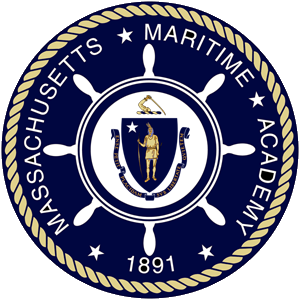MT-3261
Containerization and Modern Cargo Stowage
Course Description
This course gives a basic understanding of meteorology, and its application to shipboard operations. The student will have a knowledge of meteorological instruments and their application, knowledge of the characteristics of various weather systems, reporting procedures and recording systems, and the ability to apply the meteorological information available. Students will complete a practical assessment of reading and interpreting weather charts and demonstrate the ability to forecast future weather events. In addition, the knowledge gained in this subject will serve as the basis for further training to the level of Chief Mate and Master.
This class may be live-streamed from Massachusetts Maritime Academy (MMA) to students taking the course at Shanghai Maritime Academy (SMU) in Shanghai, China.
This course consists of three 1-hour lectures or two 1-1/2-hour lectures a week for a semester with a comprehensive final examination.
Entrance requirements
Successful completion of MT-2231 Basic Seamanship and MT-2141 Ship’s Construction.
Learning Objectives
Demonstrate knowledge and understanding of the following STCW elements:
- ABD-C1.3 Ramps, side/bow/stern doors or elevators
- ABD-C1.3 Cranes, derricks, winches
- ABD-C1.1 Function and uses of hoists, cranes, booms, and related equipment
- ABD-B1.2 Basic knowledge of and precautions to observe in connection with particular types of cargo
- ABD-B1.2 Identification of IMDG labelling
- ABD-B1.1 Procedures for safe handling, stowage and securing of cargoes and stores, including dangerous, hazardous and harmful substances and liquids
- OICNW-B1.2 Knowledge of safe handling, stowage and securing of cargoes, including dangerous, hazardous and harmful cargoes, and their effect on the safety of life and of the ship
- OICNW-B2.1 Knowledge and ability to explain where to look for damage and defects most commonly encountered due to: loading and unloading operations
Topics
- Course Introduction
- Dry Cargo Introduction - Types of Transport, Cargos and Ships
- Cargo Containers – History & the Intermodal System
- Cargo Containers – Parts & Types
- Cargo Containers - Terminals
- Cargo Containers - Ships
- Cargo Containers - Handling Securing
- Cargo Containers – Refrigerated Cargo
- Hazardous Cargo
- Hazardous Cargo - IMDG
- Cargo Operations - Officer Responsibilities
- Cargo Handling Equipment – Derricks & Cranes
- General Cargo Stowage Principals
- General Cargo Load Planning
- General Cargo Preparing Holds & Ship
- Roll On / Roll Off Cargo
- Special Cargo - Heavy Lift
- Special Cargo – Timber
- Special Cargo - OSVs
- Special Cargo - UNREP
- Special Cargo - Miscellaneous
- Bulk Cargo
- Caring for the Cargo - Responsibilities
- Cargo Documentation incl. security
- Claims & Claim Prevention
Other objectives
- Demonstrate the knowledge necessary to stand an effective cargo watch on deck of various types of dry cargo vessels
- Exhibit a comprehension of the basics of cargo load planning
- Show a familiarity with how to operate ship’s cargo handling equipment
- Demonstrate an understanding of the details of cargo containers; proper handling, stowage and lashing including proper handling of refrigerated cargo containers as well as labeling, stowage, and segregation of hazardous cargo
- Display an understanding of dry bulk cargo operations
- Have the knowledge necessary to supervise the loading and unloading of cargo on board various types of dry cargo vessels
- Fully understand the modern cargo container, its proper handling, stowage, and securing including proper handling of refrigerated containers
- Be able to identify dangerous goods and know they are to be stowed, segregated, and labeled.
- Know proper dry bulk handling practices
